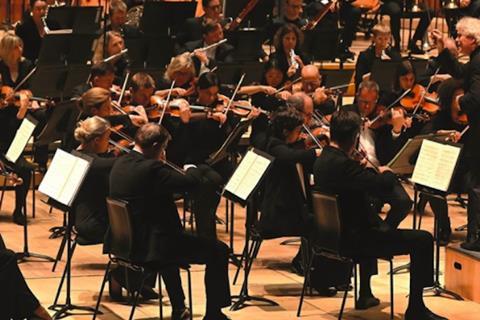Gerald Elias has spent many years as a professional orchestral violinist – in the Boston SO and Utah Symphony – and has been music director of Salt Lake City’s Vivaldi by Candlelight chamber orchestra since 2004. Here he explores the issue of page-turning - a universal challenge faced by orchestral string players which go unrecognised by audiences

The following extract is from The Strad’s March issue feature on the challenges of orchestral string playing that often go unnoticed by the audience. To read in full, click here to subscribe and login. The March 2021 digital magazine and print edition are on sale now.
If I’m a second violinist sitting to the conductor’s left and on the ‘inside’ of my desk, it’s my responsibility to turn pages for the ‘outside’ player. (I’m not sure why this is the tradition, except that perhaps it’s less visually distracting to the audience. It would actually be easier for the outside player to turn pages, because the lower right-hand corner of the music is within inches of their left hand.)
Read Orchestral Tricks: in plain sight
Read Tales of an orchestral violinist – imperceptible page turning
Read Tales of an orchestral violinist – sitting correctly
From the inside, I have to lean across the desk and turn pages with my right hand without interfering with my desk partner’s vision or position. When the conductor relegates us to the other side of the stage, I’m now to the right of the outside player and have to turn pages with my left hand. I can’t tell you the number of times I’ve been sitting there playing and frantically nodding my head for my desk partner to turn the page, then cursing to myself at the last split second, ‘That’s my job!’
-
This article was published in the March 2021 Francesca Dego issue
The Italian violinist is granted the rare opportunity to record on Paganini’s ‘Il Cannone’ Guarneri ’del Gesù’. Explore all the articles in this issue.Explore all the articles in this issue
More from this issue…
- Francesca Dego plays ‘Il Cannone’
- Ivry Gitlis 1922-2020
- Modern-day violin making dynasties
- Astor Piazzolla - 100 years
- Violin making in China
- The trials of orchestral playing
Read more playing content here












































No comments yet